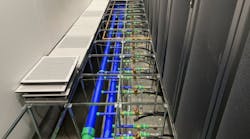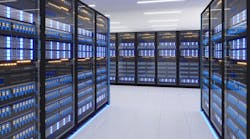Tim Shaheen, Executive Vice President of Strategy & Development at Aligned, explores what’s required to bring us into the next chapter of our digital future.
Tim Shaheen, Executive Vice President of Strategy & Development at Aligned
For the hyperscaler embarking on the design and build of a new data center, predictability and speed are core requirements of its data center partner. According Global Market Insights, the hyperscale market is expected to rise from $20 billion in 2018 to $65 billion by 2025 — that’s an increase of 225 percent. Accordingly, these types of organizations frequently require large-scale infrastructure deployments and stringent timelines that are fast-tracked to meet immediate business expansion opportunities.
Standardizing for Speed
Cisco predicts that by next year, hyperscale facilities will account for 55 percent of traffic within all data centers, up from 39 percent in 2016. Consequently, this is no time for new data center builds and capacity expansions by way of “snowflakes.” For those familiar with the movie – no, I’m not referring to a data center Fight Club. I’m talking about completely unique methodologies, processes and projects that may introduce potential unnecessary risk and schedule delays.
On the contrary, these projects require a high level of standardization, modularity and scalability, with a simple and repeatable model for expansion in new or existing markets. This standardization can range from data center design, to supply chain and inventory, to modular mechanical and electrical systems.
Proven and standardized data center designs allow for easy repeatability at scale while reducing engineering and manufacturing time. Moreover, standardized data center designs are also less complicated to manage because expertise can be transferable from site-to-site, and maintenance and service can be streamlined. Furthermore, leveraging modular and prefabricated modules can reduce and even eliminate on-site labor, which is especially desirable in view of the ongoing pandemic. In fact, activities such as integration, testing and pre-commissioning can all be accomplished in a controlled, off-site environment, thus limiting personnel and increasing safety.
There’s no need to reinvent the wheel with every deployment; the objective is to deliver reliable infrastructure safely, quickly and risk-free, while still allowing for optimal flexibility and scalability to accommodate future growth.
The Right Cultural Fit
That being said, long before a site is determined to be shovel-ready, or a data center architect’s blueprint is unfurled, there exists a foundational prerequisite to predictability and speed. Namely, culture.
The companies responsible for fast-tracking our digital future must be assured that cultural alignment exists between their organizations and their trusted data center builders and / or operators. Corporate values such as inclusion, diversity, openness, integrity and sustainability are just some that comprise the bedrock of service excellence. At first glance, these principles may seem intangible. But when practiced by the data center ppartner, they touch upon every aspect of delivery, from design, build and technology, to commissioning and operations. In the words of one hyperscaler’s senior director of data center construction on a recent panel discussion, “When we get the culture right, execution is predictable, and everything falls into its rightful place.”
In the near future, we can anticipate that hyperscalers will turn towards a breadth of data center configurations, from edge and near-edge to traditional multi-megawatt facilities, in order to accommodate rising demand and latency requirements.
Enabling Digital Transformation, Overnight
In order to effectively address customer needs and accelerated expansion schedules, data center operators should be prepared by having a finger on the pulse of capacity demand. This means constantly evaluating land acquisitions and conducting thorough due diligence in matters of zoning, permitting and environmental mandates and opportunities, especially when moving into new regions and availability zones.
Even before the pandemic strained our bandwidth capacity and thrust businesses into digital transformation virtually overnight, surging demand for public cloud services, soaring growth in social media and other related digitally-driven phenomena called for hyperscale and cloud provider expansion to keep up with demand. And yet, we can reasonably expect hyperscale data center expansions to accelerate even further as next-generation technologies such as Artificial Intelligence, IoT-connected devices, and augmented and virtual reality (AR/VR) become mainstream over the course of the coming years, and companies transition to permanent remote work forces as a means to build more resilient business operations in the coming months. According to research by Gartner, going forward, nearly half of all companies recently surveyed have said they intend to allow employees to work remotely full-time, and as many as 82 percent of firms intend to permit remote working some of the time when employees can safely return to the office.
In the near future, we can anticipate that hyperscalers will turn towards a breadth of data center configurations, from edge and near-edge to traditional multi-megawatt facilities, in order to accommodate rising demand and latency requirements. It’s self-evident that these companies must be able to achieve the necessary speed-to-market and scale with minimal exposure to risk when expanding in new and emerging geographies to remain successful and keep up with their own consumer demand. It’s equally true that data center providers must maintain a culture that aligns with hyperscalers’ principles of doing business.
Tim Shaheen iis EVP of Strategy & Development at Aligned.


